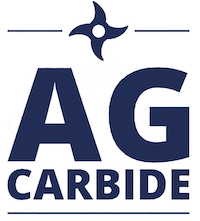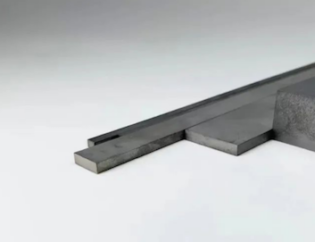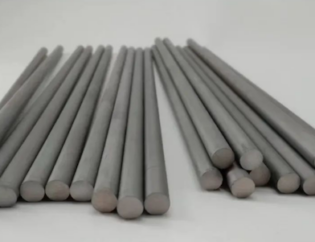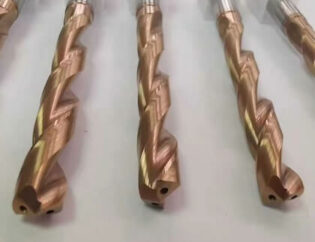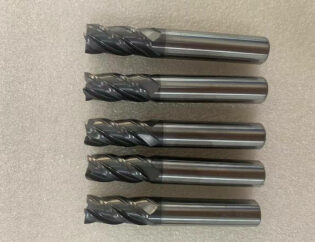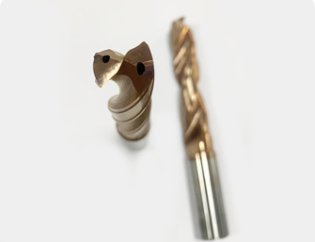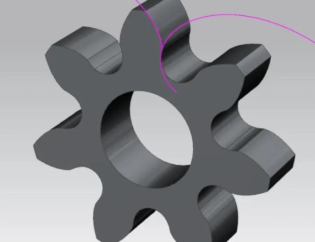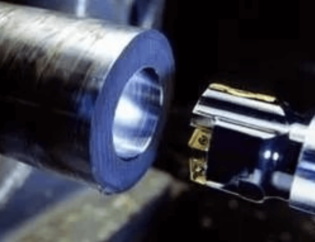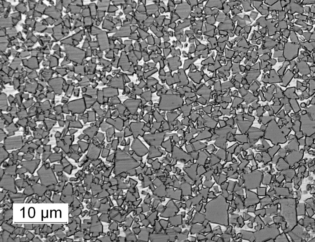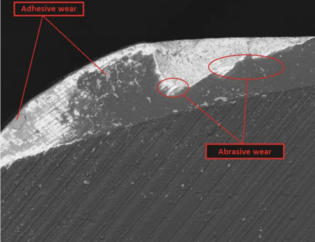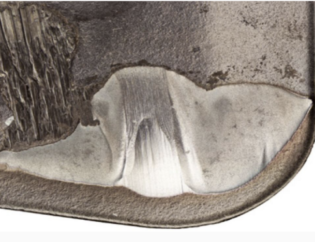Nickel base superalloy materials have good strength, certain anti-oxidation and corrosion ability, and good strength and hardness, which have been obtained in practical production
More and more widely used. However, the processing of nickel base alloy is difficult, because its composition contains a trace of W element, which can make the hardness of the matrix higher. And because there is also higher Ni element in the component, which requires higher temperature in the processing process to ensure comprehensive performance, and has higher requirements for cutting tools and processing conditions.
There are several problems:
① the cutting force is about 50% higher than that of 45# steel, and after machining, the work hardening and residual stress of the surface layer are large, and the tool tip and marginal wear are extremely strict heavy.
② Poor thermal conductivity and high cutting temperature.
③ Bonding tendency with tools large, it is easy to produce chip buildup, which affects the processing quality of the machined surface.
④ Combined hard spots such as tungsten carbide and intermetallic compounds in gold have a serious impact on the cutting tool heavy hard spots are worn.
case study of nickel base alloy processing
Aiming at the processability and application performance of nickel base alloy, it is implemented in the factory in the process of international processing, in order to achieve a better sealing effect of the workpiece and ensure the sealing part is not corroded, and nickel base alloy is welded in the side sealing plate of the workpiece gold material, which can not only seal, but also prevent corrosion, mainly prevent hydrogen sulfide corrosion, improve the sulfur resistance effect of the sealing plate, and can withstand Pressure of 140MPa. After welding, the Welded Nickel base alloy needs to be some parts have been cut and processed, which has met the use requirements of parts. During the processing process through revising the experimental data, the focus is on the selection of cutting tools and the selection of cutting parameters selection, change of tool path, change of other auxiliary machining conditions, etc. Study the processing process of nickel base alloy from three aspects, and finally form a reasonable processing parameters, laying a good foundation for the further application of nickel based alloy materials.
The sample workpiece actually processed is shown in Figure 1. In the process of processing, test

Considering the processing cost, processing benefits, the actual situation of the enterprise, etc., mainly from the tools, cutting parameters, tool path, processing conditions, etc
Selection of cutting tools
When choosing nickel base alloy machining tools, we should first understand the processing of nickel base alloy requires that the heating temperature should be higher than 900 ℃, and the temperature is too high low temperature will cause coarse grains and lose the high temperature resistance and creep resistance of the material. The cutting tools that can be used to process nickel base alloy materials before mainly include cemented carbide and ceramic porcelain, CBN, etc. In consideration of the processing cost of enterprises, more cemented carbide is used
First, we use ordinary hard coating
The alloy tool processes the parts, as shown in Figure 2, although it is made of imported materials,
However, the tool has low durability, serious wear and serious damage, such as
As shown in Figure 3, although the cutting parameters and other parameters have been modified for many times, the effect is not obvious
After many experiments and tests, as shown in Figure 4, according to the processing characteristics of titanium alloy, select
Use fine grains with low affinity with titanium alloy, good thermal conductivity and high strength
Tungsten cobalt cemented carbide, and finally choose the cemented carbide made of shangao jhp780
Milling cutter, good effect [2]. As shown in Figure 5, this kind of tool has both chip removal and good
Rigid double demand, small front angle, and double rear angle treatment is adopted for the rear angle, which is more tangent
For the large part of ordinary steel, the arc transition edge is used for the tip part, and the roughness of the blade is relatively high
Small, ensuring smooth chip removal, suitable for high-performance machining of superalloys.





Selection of cutting parameters
In the selection of cutting parameters, combined with the processing characteristics of nickel base alloy and the basic characteristics of the selected cutting tools mainly include cutting temperature, chip breaking and chip removal, and production considering several aspects of work hardening, the cutting parameters are revised, reduce the rotating speed of the machine tool, that is, reduce the cutting speed and select a larger cutter amount, reasonable feed rate, too large feed rate is easy to cause blade burn, feed. If the measurement is too small, the blade will wear too fast because it works in the work hardening layer.
selection of cutting speed
Cemented carbide end milling cutter with a diameter of 14mm, with a rotation speed of 600r/min, according to the calculation formula of cutting speed v c= π d n /1000, it can be obtained that generally, the cutting speed is 26.376m/min, which is slightly higher than the reference value of tool parameters, compared with cutting ordinary steel, we can choose 2000r for the same tool. Min, the cutting speed is 87.92m/min. We are choosing cutting speed is basically half of that of ordinary cutting.
selection of feed rate
Carbide end milling cutter with a diameter of 14mm, when processing ordinary steel
The feed rate can be 2000mm/min. When processing nickel base alloy materials,
In order to ensure the durability of the tool, choose 250~300mm/min, which is about common One eighth of the feed rate of through cutting.
selection of cutting capacity
In order to ensure chip removal and minimize cutting work hardening, choose
A large amount of knives are eaten, which mainly improves the durability of knives and reduces the grinding of knives
Loss. In this example, the amount of knife to be eaten is 1.5mm, and the status of iron filings after processing is as follows:
As shown in Figure 6.
Table 1 shows the selection of cutting speed for different combinations of cutting amount and feed rate
As shown in. After adjusting the cutting parameters, although the processing time is long, it is large
It greatly improves the durability of cutting tools. It used to take 3~4 knives to process a workpiece

After changing the tool and adjusting the cutting amount, one tool can be completed processing of a workpiece.
Through the processing experiment of nickel base alloy materials, it can be seen that nickel base :the main difficulties in alloy processing lie in how to improve the durability of cutting tools and how to ensure the processing quality of the workpiece, especially the surface quality, after reasonable selection. Select the appropriate cutting parameters, and select a reasonable walking path for this example. Reasonable treatment of route and other processing conditions, and finally realize nickel based synthesis. For the small batch production and processing of gold workpieces, without changing the processing time, it greatly improves the durability of the tool and ensures that a workpiece is made up of the original three knives.
It can be completed by one tool, and the processing quality is improved at the same time to ensure the workpiece machining The intact rate of the machine finally achieves the ideal processing effect
